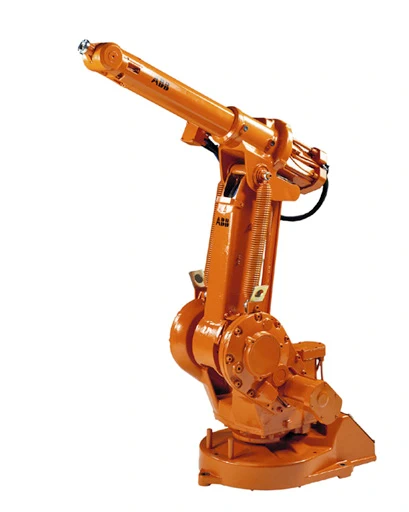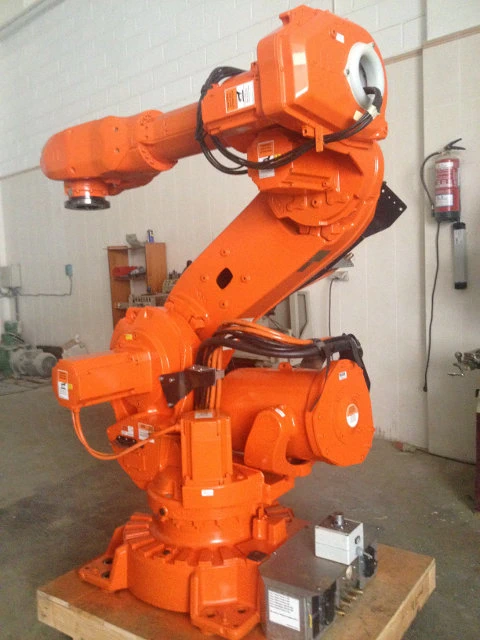Manual welding is a fundamental part of industry, which is why it is still so prevalent in modern industry. For the time being, it looks set to remain so for a long time to come. However, the advance of welding with industrial robots is unstoppable thanks to the wide range of advantages it offers and its accessibility, which is becoming more and more economically and operationally affordable. Small and medium-sized companies are rapidly implementing this technology in their production facilities, thanks in large part to the use of used, reconditioned and second-hand industrial robots.
Implementing a second-hand industrial robot in a production line is an unquestionable decision in many cases. Why should I implement robotic welding? Doing so will depend largely on the job for which the robot is intended.
In order to shed some light on this matter and to assess the appropriateness of an industrial robot in a project, from Robots Gallery we wanted to develop this brief summary of the advantages of welding with industrial robots:
- Quality/price ratio: It may seem strange to see this point at the top of the list of advantages, but there is no doubt that the investment cost of an industrial welding robot, and especially a used industrial robot, can be amortised in a practically irrelevant period of time, due to the high cost of a skilled and scarce workforce, on the one hand, and the advantages that follow this first one, on the other:
- Safety at work: it is no secret that welding represents a series of risks in people working with high temperatures, hazardous materials, aggressive environments and repetitive tasks that affect in various ways directly on the workforce and which we can forget about at the moment we employ a reconditioned industrial robot, which leads us to its great:
- Efficiency: robotic welding is fast, precise and constant, which opens up a horizon that would be difficult to envisage in other cases: supply of materials, lower consumption, deliveries, uniform quality or constant speed, to which we must undoubtedly add the:
- Precision: a second-hand industrial robot can carry out an endless number of repetitive movements with great precision and constancy: without losing the degree of attention that each job requires. This reduces costs in a number of ways and provides a predictability that is difficult to calculate otherwise.
- Performance: A job with no breaks and virtually unlimited working hours is the only thing that can bring a small or medium-sized company closer to its big competitors. A reconditioned welding robot will work as much as the work is offered, without losing any of the qualities of its work, which will help to meet the production and that of the companies to which it is supplied:
- Adjustment and forecasting of material and waste: another advantage, which has a direct impact on costs, deadlines, forecasting or quality of production, is the virtual absence of material waste, largely due to the uniformity in quality and the reduced generation of waste due to error. This brings us back to the first point, we have a very low investment cost if we consider that we are going to have a host of advantages that always end up redounding in its main value:
- Cost adjustment: the productivity of a second-hand industrial robot, added to its qualities and advantages, leaves the initial investment in a distant second place: not only is it a quickly amortisable tool, it is also a great ally when it comes to cutting costs, increasing productivity and, in short, providing value in various fields.
Manual welding will continue to be used in modern centers, and will be the most appropriate in certain cases. In fact, having qualified welders for programming and organising production will further increase the quality and efficiency of the work, so once again an industrial robot will be another ally. A used industrial robot will also be a cheaper entry-level ally and a great first step in process automation.
There is a growing need to upgrade traditional manufacturing processes to the automated environment: it is key to the competitiveness of companies today and will be even more so in the future, as shown by the growing importance of second-hand industrial robots worldwide. The lack of updating and modernisation of processes, linked to the need to adjust costs, has for decades led to the relocation of production sites and to small and medium-sized companies becoming increasingly competitive: a very productive and consistent solution at all levels lies in the use of reconditioned industrial robots, for the automation of all those processes that make it possible to adjust costs and increase competitiveness.
Robots Gallery buys, reconditions and sells used industrial robots across the globe. Through recycling and reuse we provide an average saving of 45% on the investment in industrial robots, providing equipment with a long life ahead of it, fully functional, guaranteed, and amortizable in more affordable terms. Furthermore, working with the best welding specialists, we offer second-hand industrial robots already equipped for welding and we provide our customers with contact with engineering companies specialised in the execution of turnkey robotised welding products.


